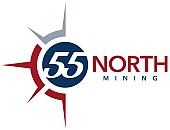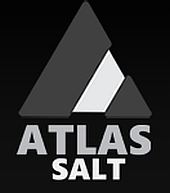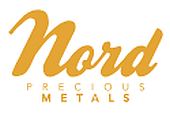 Opawica drills 0.35 m of 18.7 g/t Au at Arrowhead
Opawica drills 0.35 m of 18.7 g/t Au at Arrowhead
2022-11-15 10:44 ET – News Release
Mr. Blake Morgan reports
OPAWICA DISCOVERS 29.5M ANOMALOUS GOLD ZONE AT ARROWHEAD
Opawica Explorations Inc. has released positive drill results on its wholly owned Arrowhead property.
Opawica’s inaugural drill program on the Arrowhead was designed in collaboration with Goldspot who used integrated and reinterpreted data sets (geochemical, geophysical, geological) to create drill targets. As a result, Opawica was provided with a cohesive and informed geoscientific interpretation in efforts to help facilitate drill targeting on the Arrowhead property. The Company completed 4,306m of drilling over 14 drill holes on the Arrowhead and sent 1,590 rock samples for assay, representing 1,847 linear metres for analysis (See Table 1). The 14 drill holes were completed on 11 setups and tested 13 drill targets (See Table 2). As result the are nine target zones that were not tested during this drilling campaign.
Eleven drill holes intercepted gold zones assaying greater than 1.5 g/t along a stratigraphic strike length of 1km (See Map 1). Three of these gold zones are within anomalous gold zones of 29.5m, 8.1m and 8.5 m. The gold zones are within two settings: a) shear zones containing quartz-carbonate-tourmaline veins with pyrite within basalt or mafic tuff, b) felsic tuff with quartz-tourmaline vein and pyrite:
- Hole AR-22-01: 18.7 g/t Au over 0.35m from 90.0 to 90.35m with 0.72% Cu, white quartz veins with 5% of pyrite and 1% chalcopyrite in clusters of 1 centimeter near both contacts. Some trace of gold before and after from 86 to 96m.
- Hole AR-22-02: 1.58 g/t Au over 0.6m from 93.6 to 94.2m, quartz-tourmaline vein at 60 core angle
- Hole AR-22-03: 1.70 g/t Au over 1.0m from 251.5 to 252.5m, felsic tuff with 40% quartz-chlorite-tourmaline veins and trace of pyrite. Trace of gold before and after from 250.5 to 254.0m.
- Hole AR-22-04: 1.52 g/t Au over 14.8 m from 131.6 to 146.4 m, felsic lapilli tuff border by well silicified mafic tuff, both containing 5 to 30% quartz veining, 1 to 5% pyrite and some clusters of pyrrhotite. Trace of gold before and after from 129.9 to 159.4m.
- Hole AR-22-05: 2.48 g/t Au over 0.45m from 191.75 to 192.2m, 45% sheared quartz vein at 60 core angle with wall rock of chlorite and 1% pyrite. Trace of gold before from 190.5m.
- Hole AR-22-05: 1.13 g/t Au over 0.25 m from 229.25 to 229.5 m, 15% quartz-tourmaline vein at 45 core angles with wall rock containing 1% pyrite. Trace of gold after true 232.1m.
- Hole AR-22-06: 1.47 g/t Au over 1.7 m from 77.0 to 78.7m, quartz-tourmaline vein with 1% pyrite. Trace of gold and copper before and after from 75.0 to 81.0m.
- Hole AR-22-06: 1.44 g/t Au over 0.8m from 113.7 to 114.5 m, quartz-tourmaline vein at 60 core angle with 0.5% pyrite.
- Hole AR-22-06: 3.21 g/t Au over 1.4m from 120.4 to 121.8m, quartz-tourmaline vein with 3% pyrite. Trace of gold and copper between the previous gold zone at 113.7 to this zone at 121.8m for a total anomalous gold zone of 8.1m.
- Hole AR-22-07: 1.21 g/t Au over 4.5m from 211.5 to 216.0m, quartz-tourmaline vein within mafic tuff and trace of pyrite and pyrrhotite.
- Hole AR-22-08: 0.85 g/t Au over 3.5m from 211.0 to 214.5m, quartz-tourmaline vein at 30 core angle within mafic tuff and trace of pyrite and pyrrhotite. Trace of gold before and after from 207.0 to 215.5m for a total anomalous gold zone of 8.5m.
- Hole AR-22-09: 2.32 g/t Au over 1.0m from 121.0 to 122.0m, 4.5% quartz vein at 45 core angle with 3% pyrite and 3% pyrrhotite. Trace of gold before and after from 119.8 to 123.0m
- Hole AR-22-10: 2.29 g/t Au over 1.3m from 118.5 to 123.8m, brecciated quartz vein at 45 core angle with pyrite and pyrrhotite. Trace of gold before and after from 119.8 to 125.0m.
- Hole AR-22-14: 1.52 g/t Au over 0.6m from 147.5 to 148.1m, sheared basalt at 30 core angle with 30% quartz vein and 3% pyrite.
- Hole AR-22-14: 3.91 g/t Au over 1.0m from 154.0 to 155.0m, silicified basalt with 3cm quartz vein at 5 degrees core angle containing less than 1% pyrite. Trace of gold before and after from 153.0 to 157.0m.
The Arrowhead Project mainly covers metavolcanites of the Blake River Group. Strata are oriented E-W and present a sub-vertical dip. Volcanic and sedimentary rocks form a series of E-W trending, steeply dipping monoclinal panels. The sequences are separated by longitudinal contacts parallel to the lithologies. In the southern part of Joannes Township, the Cadillac Fault runs along an E-W axis over a lateral distance of about 150km. In the Province of Quebec, more than 40 gold deposits have produced over 60 million ounces of gold in the past hundred years and are associated with this major structure and its subsidiary faults.
Historical holes intercepted 40 mineralized zones, mostly in gold, but some in copper and zinc. These mineralized intercepts enhance the property’s potential for four types of mineralization:
Gold-rich volcanogenic massive sulphide (gold-rich VMS) deposits, like the Bousquet #2 and LaRonde mines,
Volcanogenic massive sulphide (VMS) deposits, like at the Louvicourt mine,
Gold-rich polymetallic veins, similar to the Doyon and Mouska gold mines,
Quartz-carbonate auriferous veins associated with regional E-W trending faults and shear zones, like at the O’Brien, Kewagama, Central-Cadillac, Wood-Cadillac and Lapa mines.
A follow up program consisting of induce polarization (IP) survey should help define mineralized zones which will be targets for pursuing the follow up drill program.
Blake Morgan, President of Opawica stated “Now that the Opawica team has the Arrowhead assays we can move towards an aggressive phase two drill program. With all the new data we have acquired, our geological team is gathering a greater understanding of the system. Open in all directions and most importantly to depth, this story has just begun. With our successful maiden drill program, based on modelling, our system is developing very similar to Agnico Eagles multi million-ounce La Rhonde Gold Mine right next door.”
 |
Assay samples were analyzed at ALS Chemex lab of Rouyn-Noranda, 165 Rue Jacques-Bibeau, Quebec (an ISO/IEC 17025:2005 accredited facility). The sampling program was undertaken by Company personnel under the direction of Mr. Yvan Bussieres, P.Eng., A secure chain of custody was maintained in transporting and storing of all samples. The rock samples underwent fire assays, 1E3 – Aqua Regia – ICPOES and select samples underwent gravimetries.
Samples of mineralization were taken at 0.5-to-1.5-meter intervals, with sample intervals being adjusted to respect lithological and/or mineralogical contacts and isolate narrow veins or other structures that may yield higher grades. The core was split in two separate sections. One half of the core, the other half is sent for analysis.
One half of the sampled intervals were bagged and tagged with one of the dual sample tags. The individual sample bags were sealed and placed into rice bags and marked with the contents. The samples were delivered in batches in January to Techni-Lab Abitibi Inc. (Actlabs) Ste-Germaine-Boule Quebec, for processing, crushing, pulverizing and analysis.
The Quality Assurance and Quality Control or QA/QC protocols were as follows: A blank sample was inserted at samples ended by the number 10, 30, 70 and 90 in the sample sequence – a blank sample usually consisted of white three-fourths inch rock that is known not to contain any metals. A low-grade rock standard was inserted at samples ended by the number 50, in the sample sequence. A high-grade rock standard was inserted at samples ended by the number 00, in the sample sequence
About Opawica Explorations Inc.
Opawica Explorations is a junior Canadian exploration company with a strong portfolio of precious and base metal properties within the Rouyn-Noranda region of the Abitibi gold belt in Quebec, and in central Newfoundland and Labrador. The Company’s management has a great record in discovering and developing successful exploration projects. The Company’s objective is to increase shareholder value through the development of exploration properties using cost-effective exploration practices, acquiring further exploration properties and seeking partnerships by either joint venture or sale with industry leaders.
Opawica’s Arrowhead property lies in Blake River Group metavolcanites similar to those of large gold mines to the east, such as Mouska (7.9 km), MicMac (9.0 km), Mooshla (10.0 km) and Doyon (11.3 km).
Yvan Bussieres, P.Eng., OIQ #31985, has reviewed and approved the technical content of this news release. * The Qualified Person has been unable to verify the information on the adjacent properties. Mineralization hosted on adjacent and/or nearby and/or geologically similar properties is not necessarily indicative of mineralization hosted on the Company’s properties.
We seek Safe Harbor.




























